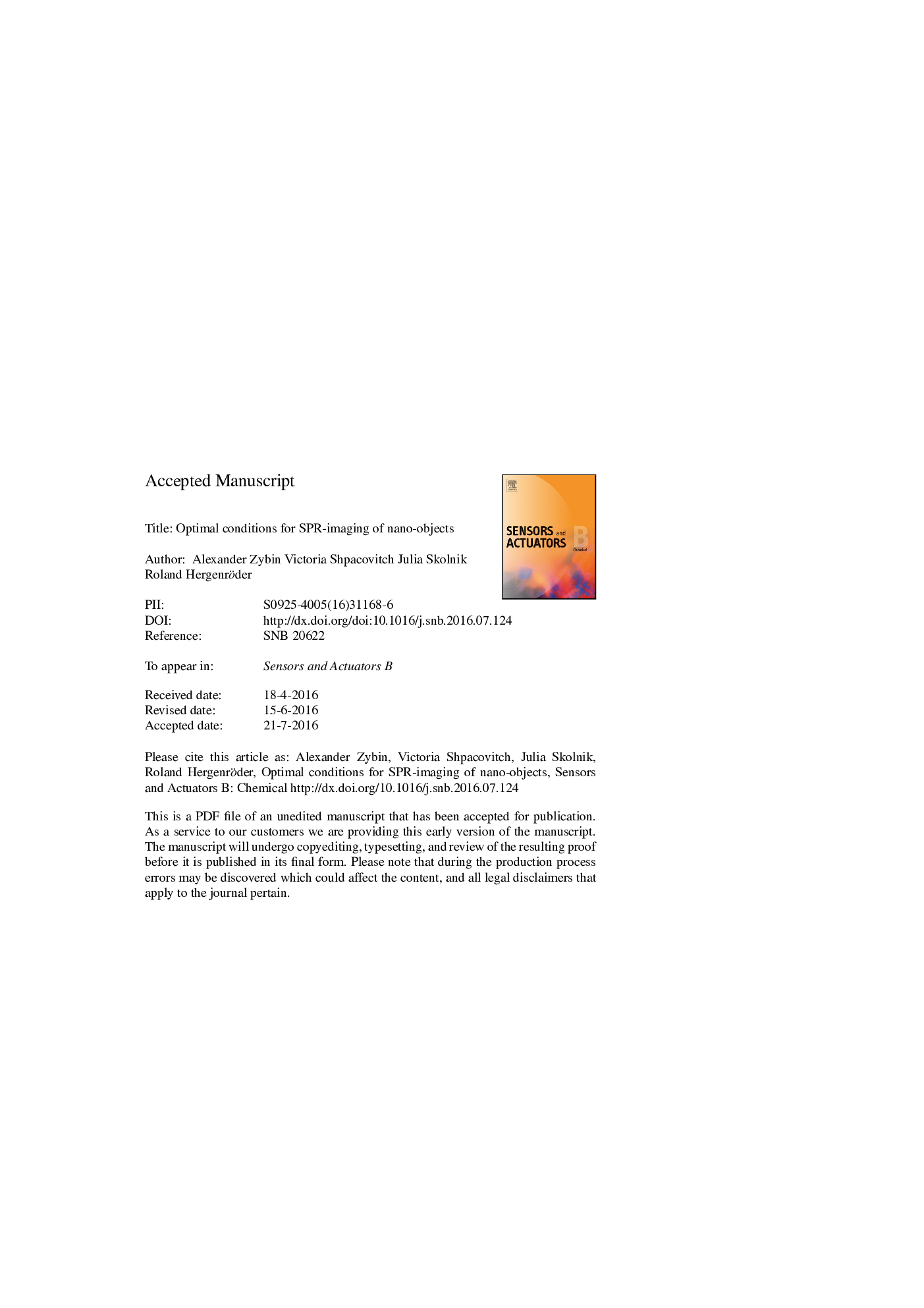| Article ID | Journal | Published Year | Pages | File Type |
|---|---|---|---|---|
| 7142365 | Sensors and Actuators B: Chemical | 2017 | 21 Pages |
Abstract
Approaches commonly used for the description of surface plasmon resonance (SPR) presume infinite transverse dimensions of interacting layers. Obviously, the interaction of nano-sized objects with plasmon-generating surfaces contradicts this assumption. In the present work, a simple model accounting for the finite dimension of nano-objects is applied, explaining experimentally observed effects of SPR detection of such objects. The model considers the radiation of a plasmon appearing in the gold layer around a particle as a main factor of image formation. This secondary plasmon appears due to scattering of the primary plasmons excited in the gold layer near the SPR resonance. The new approach allows for the optimization of the angle of incidence as well as the sensor layer parameters, providing a more than 10-fold improvement of the sensitivity compared to using the parameters usually applied in classical SPR.
Keywords
Related Topics
Physical Sciences and Engineering
Chemistry
Analytical Chemistry
Authors
Alexander Zybin, Victoria Shpacovitch, Julia Skolnik, Roland Hergenröder,
